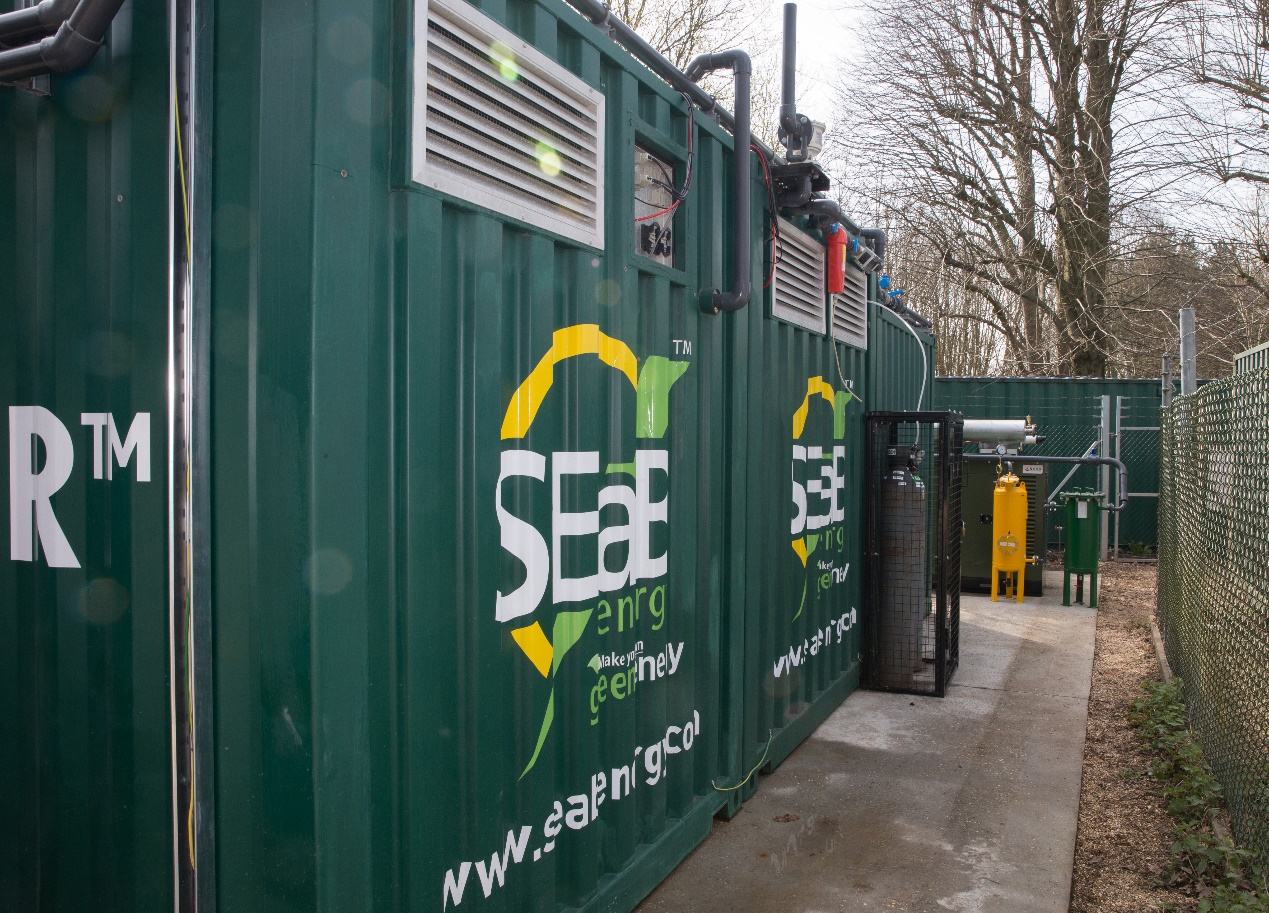
A husband-and-wife team in England have come up with a portable solution for turning animal manure and kitchen scraps into energy
Livestock—mainly cattle—take the blame for nearly 15 percent of the world’s greenhouse gas emissions, according to the UN Food and Agriculture Organization. On a quiet industrial estate in Southampton, on England’s south coast, a husband-and-wife team may soon offer the unwitting ungulates a means to repair some of their environmental vandalism.
After five years in development, their company, SEaB Energy, is about to put two different models of self-contained anaerobic digesters into production. (Prototypes have already been tested at the Southampton Science Park, the Lancaster Brewery and a farm in Hampshire.)
These micro, mobile power plants use a natural process to transform waste into renewable energy. Anaerobic bacteria digest organic matter such as manure or food waste to produce biogas, a mixture which is primarily methane and carbon dioxide. The fuel serves as heat and electricity, while the leftover organic matter can be used as agricultural fertiliser.

The idea was the brainchild of CEO Sandra Sassow, an American-born entrepreneur with a background in hi-tech and coding. The inspiration came from her husband, who also invented the technology. A founding partner of the alternative energy practice at PricewaterhouseCoopers, Nick Sassow had spent much of his career helping the world’s largest energy producers negotiate the vanguard of the alternative energy revolution since it began two decades ago.
Talking to her husband, Sandra noticed that the limiting factor in all the projects that Nick and his clients were working on was the question of distribution. “They kept asking ‘how can we get the power into the grid’,” she recalled.
If distribution was such an obstacle, Sandra reasoned, why not remove the grid entirely, and generate energy where it will be consumed, on site in a small-scale local power plant.
Armed with this insight, the two set out to decide what energy source the plant would use. Scalable solar technology was already too advanced for a small new entrant. While marine and wind power both showed promise (wind might be the pair’s next venture), they settled on anaerobic digestion.
The Muckbuster specializes in manure but also treats crop residue and certain types of food waste. The company’s second unit, the Flexibuster, is designed to handle mainly food and other organic waste, since it turns out that anaerobic digestion works even better on food waste—which is easier to find, especially in cities, and in huge supply. The UN reckons that about a third of the food produced in the world for human consumption every year—approximately 1.3 billion tonnes—gets lost or thrown away.
The great availability of food waste also makes this system a powerful tool to deliver power to millions in the developing world with little or no access to the electricity grid. In Nigeria, for example, Sandra would like to put Flexibuster units on gasoline station forecourts, so that locals can trade their food waste for biogas to refill the gas containers they use to cook.
Both digester units are portable, turnkey systems fitting into six-meter-long shipping containers that make them easy to move and install. They are conceived for sites generating between 200 and 1,000 tonnes of waste per year, such as villages, office buildings and military sites. Each one should eventually pay for itself in savings on energy costs, and even generate income for its owners through the electricity it creates.
Across Africa, Sandra believes that the units could replace diesel generators with more cost-effective and carbon-friendly solutions. She hopes they can transform electricity generation for rural communities in the way that mobile telephones have transformed communication. In many African countries, the widespread adoption of cell phones leapfrogged entirely the establishment of a fixed line network for which there is now no need. In the same way, effective local power plants could remove the need for national electricity grids.
It’s an enthralling prospect. But bringing electricity to millions of the world’s poorest using livestock manure and kitchen scraps sounds like something of a moonshot idea to investors. This, and the timing of the business’ inception, have made it tough to find financing.
In 2009, asking investors to sink serious money into an alternative energy project that would take more than five years to come to market was, Sandra conceded, “a big ask.” So the £4 million (US$6.3m) she and Nick have raised to date has come from friends and family. But earlier this year the Novia platform started marketing a fully secured TTC Green Energy Bond for deploying SEaB Energy’s Flexibuster units, from which it aims to raise £10 million from institutional investors at a hefty 11 percent yield.
In the past few years SEaB Energy has won numerous awards and accolades, including recognition by LAUNCH: Beyond Waste as a “game-changing” initiative. Meanwhile Sandra is making promising noises about her order book. She’s reticent to disclose the number of units sold so far, but two Flexibusters were being delivered this fall to Southampton General Hospital and a developer in Northern Ireland.
The company also won the opportunity to pilot a unit at London’s Canary Wharf, which it anticipates doing later this year. Sandra promises more “exciting news” to come, and investors assume this is more than hot air.
By Hugo Cox for Sparknews


























